di Marta Lock
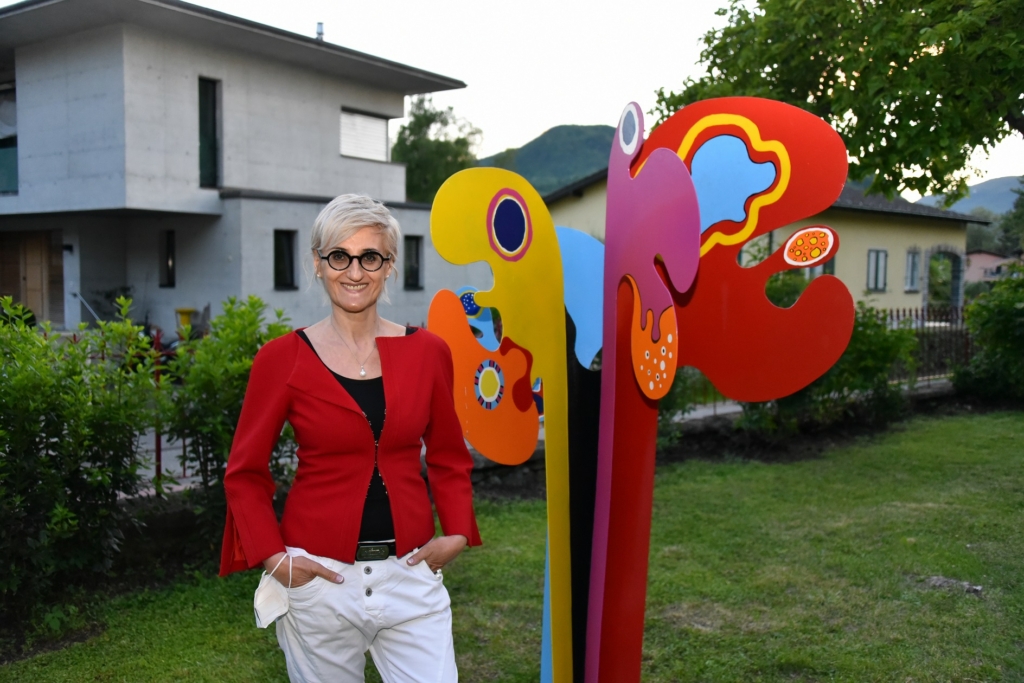
Dinamica, esplosiva, un vero e proprio vulcano di energia vitale, oltre che creativa, Tiziana Mucchiani-Farah, in arte MuiT, ha scelto di vivere la sua vita misurandosi con la scoperta del mondo, oltre che di se stessa; di origini italiane, si trasferisce in Germania per studio e poi ancora a Londra per seguire un percorso professionale che l’ha portata a contatto con aziende multinazionali grazie a cui non solo ha perfezionato le lingue straniere ma ha anche avuto l’opportunità di sviluppare un atteggiamento empatico e di ascolto nei confronti di tutto ciò che era diverso ed esterno a sé, crescendo così come individuo e come professionista. Nel periodo londinese ha intrapreso un cammino contemporaneo a quello strettamente legato al lavoro, e cioè quello artistico, dando sfogo a un’energia creativa che sentiva crescere dentro di sé fino al punto di doversi manifestare; gli studi iniziali di Arte e Ceramica le hanno permesso di studiare la materia e poi gradualmente orientarsi verso la scultura che contraddistingue il suo linguaggio creativo attuale. Dopo dodici anni di permanenza nel Regno Unito decide di fare rientro in Italia e poi, per le consuete vicissitudini della vita, si stabilisce definitivamente in Svizzera dove attualmente vive e lavora dedicandosi unicamente alla professione di artista. L’apertura verso l’altro da sé le ha permesso di sviluppare un carattere aperto e vitale, consapevole che ciascun evento, ogni interazione e qualsiasi incontro abbia un risvolto positivo nel percorso esistenziale di un individuo; ed è esattamente questo concetto di base che si riscontra nelle sue sculture in cui la sfera è elemento protagonista, simbolo del cerchio della vita, delle esperienze che devono condurre al compimento personale e interiore ed è proprio grazie al loro succedersi che l’evoluzione progredisce, incontro dopo incontro, circostanza dopo circostanza. La sua poliedricità e l’apertura alla sperimentazione si ripercuotono anche nella scelta dei materiali attraverso cui dare vita al suo impulso creativo, perché la Mucchiani-Farah spazia dal bronzo al metallo, dalla ceramica alla cartapesta, dal gesso alla vetroresina in base alle emozioni che desidera descrivere, al messaggio che vuole lasciare all’osservatore. La conoscenza della poliedricità umana, delle sfaccettature di una verità che non può essere mai assoluta proprio perché i punti di vista sono molteplici e ugualmente validi se osservati dall’angolazione del singolo, le permette di porsi in maniera aperta, quasi interrogativa nei confronti degli argomenti che affronta nelle sue sculture; questa caratteristica si rivela in quel suo non chiudere mai la sfera, bensì lasciare aperture di interazione con lo spazio circostante ma anche inserendo delle figure indefinite che potrebbero essere interpretate come mani che si tendono al dialogo e al confronto, e che sono metafora della necessità di comprendere, di assorbire la conoscenza interiore che manca. Le superfici possono essere più levigate oppure più ruvide, a seconda dell’emozione raccontata nell’opera.
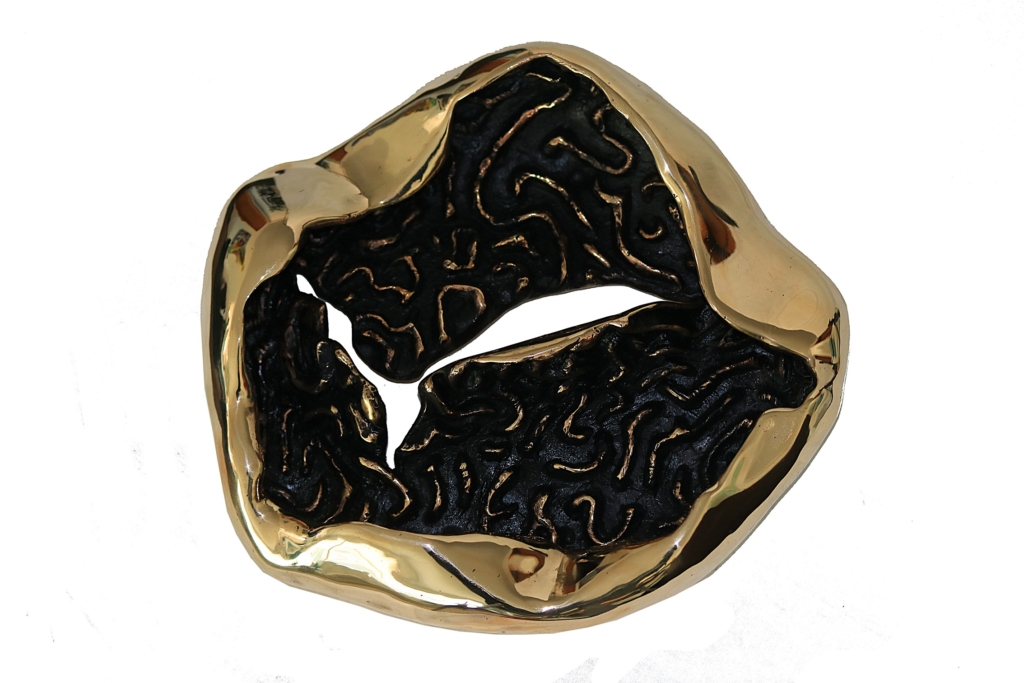
Quando però si propone di realizzare sculture più grandi, destinate e concepite per entrare in comunicazione diretta con l’ambiente esterno, l’artista abbandona la monocromia plastica del bronzo per dar vita a opere vivacemente colorate, in cui le tonalità sono piene, affatto sfumate bensì definite e incisive proprio per il loro essere decisamente presenti nella singola identità cromatica.
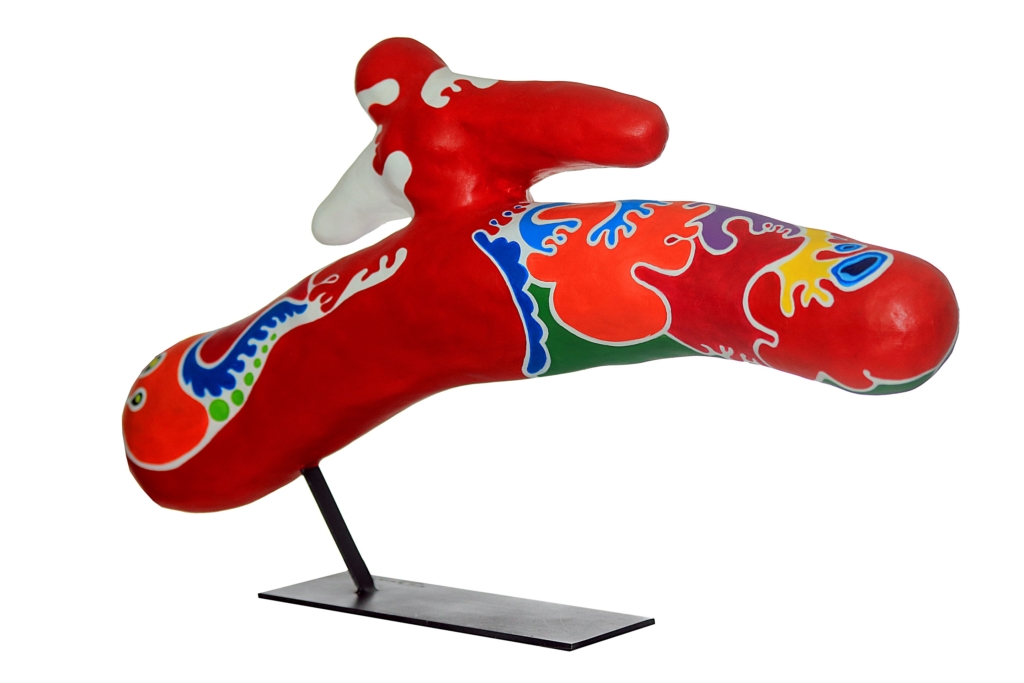
Il messaggio è dunque solare, sorridente, entusiasmante, comunica con l’osservatore attraverso la gioia fanciullesca e primordiale che si nasconde dentro ogni persona ma che spesso viene dimenticata o nascosta perché l’essere adulti include anche quel sacrificio del lato giocoso… eppure Tiziana Mucchiani-Farah suggerisce che non è così, che le due parti possono convivere e indurre a vivere l’esistenza in maniera migliore. Andiamo ora a conoscere personalmente questa originale artista.
Tiziana, il suo cammino personale ha costituito la base e l’essenza stessa della sua creatività; ci può spiegare quando ha cominciato a sentire l’impulso di intraprendere gli studi artistici? C’è stato un episodio preciso oppure è qualcosa che è maturato lentamente all’interno di sé?
Ho sempre amato disegnare, fin da bambina avere un pezzo di cara, un foglio o un diario e dei colori mi rendeva felice e mi assorbiva per molto tempo; poi ho cominciato a fare piccole sculture con il Das fino a quando si è manifestato in me il desiderio di approfondire e assecondare la mia vena artistica scegliendo studi specifici. Tuttavia varie vicissitudini di vita mi hanno impedito di realizzare quel mio sogno e solo tardivamente, quando già abitavo a Londra, ho potuto studiare presso le scuole serali le Belle Arti e l’Arte della Ceramica esercitandomi in entrambe ma cominciando ad avvertire un forte predilezione proprio per il lavoro con la materia. Successivamente, a seguito del mio trasferimento in Svizzera, a Mendrisio ho sentito il bisogno di continuare a studiare e mi sono iscritta a un Corso di Scultura presso la Fonderia, dove mi sono letteralmente innamorata del bronzo. La capacità di modellare e dar vita a qualcosa attraverso le mani mi dà una sensazione incredibile di appagamento, è per questo che la mia produzione artistica è prevalentemente legata proprio alla scultura.
Il suo stile scultoreo va verso l’Astrattismo eppure non si allontana molto dal Surrealismo, soprattutto quello di Joan Mirò, è stata una scelta voluta la sua oppure un’inclinazione naturale?
L’Astrattismo ha costituito un naturale passaggio mentre mi spostavo dalla pittura alla scultura; i grandi maestri del passato che più mi affascinavano erano Picasso, Cézanne, Dalì, Kandinsky e dunque la tendenza verso la forma indefinita è stata un’evoluzione naturale. Tuttavia il vero e proprio punto di svolta nella scelta del mio stile è stato quando ho scoperto le sculture di Barbara Hepworth che mi hanno davvero affascinata moltissimo; a seguito di questo approfondimento ho capito di aver bisogno dell’Astrattismo perché nella mia forma mentale, oltre che artistica, c’è la necessità di soffermarmi solo su ciò di cui ho davvero bisogno eliminando il superfluo e pulendo le linee il più possibile. Per esempio nelle mie Sfere emerge il messaggio che pur partendo dal tutto, da un universo, si giunge comunque a tendere solo verso ciò ci cui si ha davvero bisogno… in fondo questo è il percorso di evoluzione naturale di ciascun individuo che, con la crescita e la maturità scopre che molto di ciò che in precedenza era ritenuto importante, in realtà era solo superfluo. Infatti questa operazione di eliminazione dell’inessenziale si manifesta attraverso un protendere verso l’esterno, e ciò che resta è solo la linea sinuosa del movimento della vita.
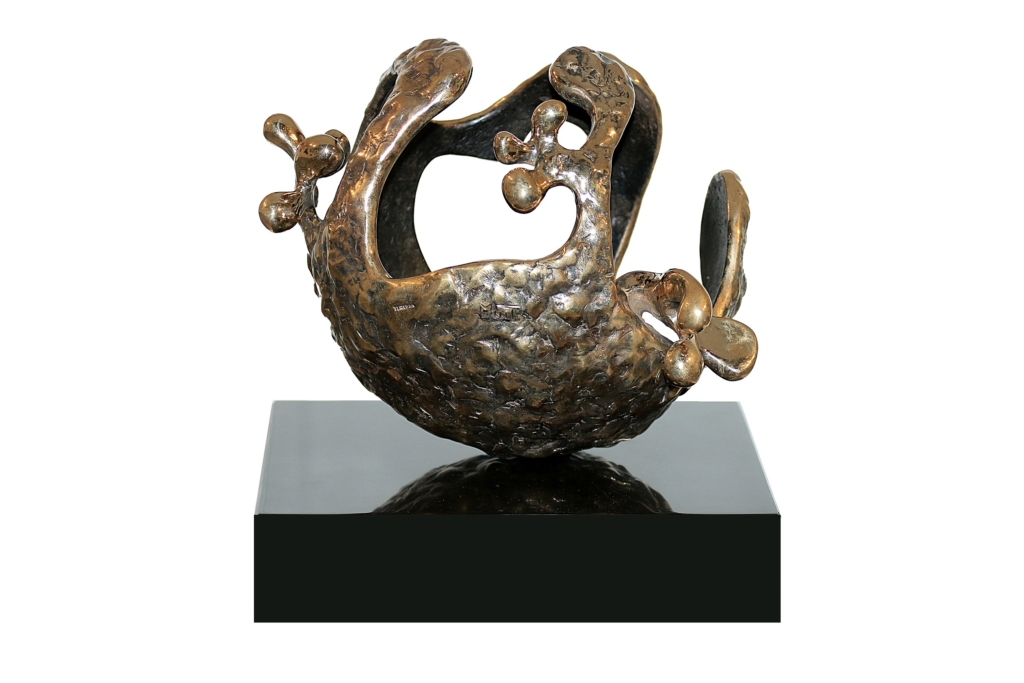
Ha recentemente partecipato, per il secondo anno tra l’altro, al Qatar International Art Festival, quanto è stata importante questa esperienza nel suo percorso artistico? Quali sono i traguardi che ha conseguito e le gratificazioni maggiori ricevute durante l’edizione del 2021?
Partecipare a questi eventi è fondamentale a livello umano e artistico poiché si entra in contatto con colleghi di ogni parte del mondo generando così uno scambio importantissimo; ho sempre pensato che l’arte non abbia confini dunque l’interazione diventa uno dei momenti più topici di questo tipo di manifestazione, un arricchimento reciproco soprattutto in virtù delle differenze stilistiche di ciascun artista. E non solo, l’apertura verso questo tipo di eventi accresce anche il curriculum artistico, si ampliano i contatti, si dimostra apertura mentale e voglia di uscire dai confini del proprio paese, così come incrementa l’interesse delle gallerie e dei collezionisti. Il fatto di di farsi vedere da un pubblico internazionale permette alla propria arte di essere veicolata maggiormente, di essere vista e questo è un incentivo per gli appassionati ad acquistare le opere. L’edizione 2021 del Qatar International Art Festival è stata ancor più rilevante perché ha visto la presenza degli Ambasciatori di Italia e Svizzera e ho così potuto ricevere la proposta da parte del primo di lasciare in esposizione alcune opere presso la sede dell’Ambasciata italiana e del secondo di dipingere una mucca, simbolo della nazione elvetica, che poi sarà esposta ai Mondiali di Calcio del 2022; questa per me è stata una soddisfazione incredibile che ha accompagnato il piacere di rincontrare artisti che già conoscevo e altri nuovi che mi hanno aperto la strada verso altri contatti.
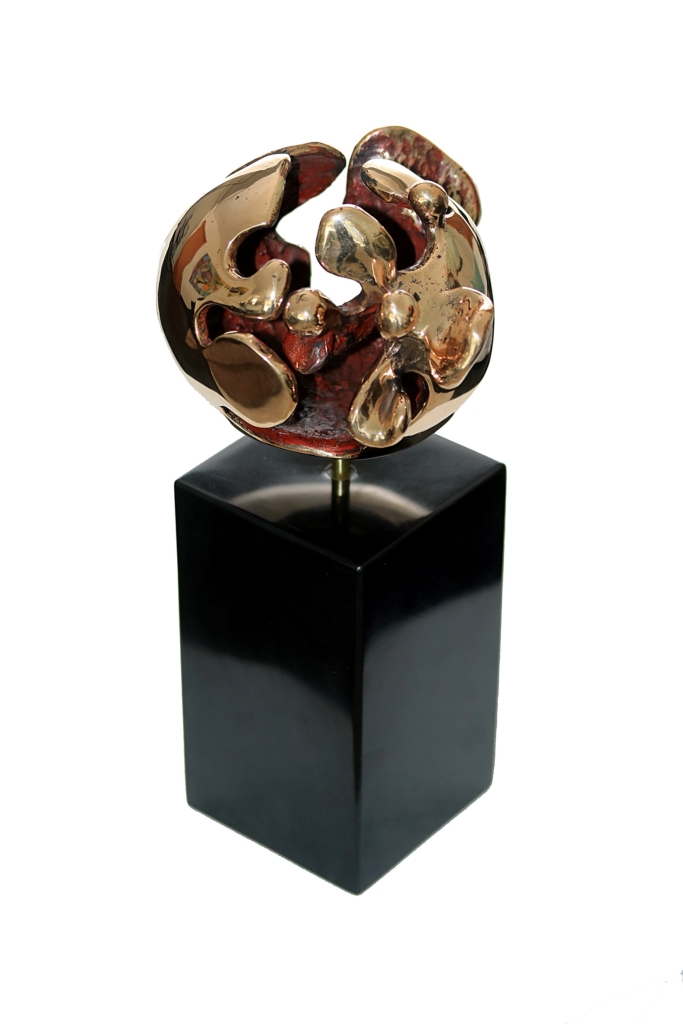
Crede sia importante l’interazione e il confronto aperto nell’arte attuale, dove gli artisti sembrano al contrario vivere una fase di individualismo? Quali sono secondo lei le debolezze di un percorso opposto a quello del Novecento e quali i punti di forza?
Il confronto nell’arte contemporanea è decisamente essenziale tuttavia mi rendo conto che per la maggior parte gli artisti di oggi sono individualisti, chiusi all’interazione quasi come se fosse presente una malcelata competizione che impedisce di essere completamenti aperti anche alla contaminazione, fattore indispensabile di apertura mentale perché spesso è proprio dal confronto, dalla capacità di collaborare che si possono generare le migliori innovazioni, perfezionare e apprendere nuove tecniche, ascoltare opinioni critiche in grado di apportare miglioramenti reciproci. A Londra ho appreso la piacevolezza di lavorare in team ma da quando sono rientrata in Svizzera questo tipo di apertura è più difficile da trovare e questo mi dispiace molto perché mi fa sentire limitata nella mia evoluzione artistica. Nel Novecento era diverso, il mondo artistico di quel periodo era una carta bianca, tutto era ancora da scrivere e gli appartenenti ai vari movimenti avevano l’entusiasmo di unirsi per creare e aggiornare linee guida proprio attraverso il confronto, c’era collaborazione e cameratismo, e il loro incontrarsi comprendeva molti altri settori della cultura rendendo quell’epoca decisamente più viva. Gli artisti di oggi, davanti a tutto ciò che è stato detto dai grandi maestri del Novecento possono solo cercare di personalizzare e rielaborare qualcosa che è stato inventato, a parte l’Arte Digitale, ecco in questo caso tutto è ancora da definire, da scoprire.
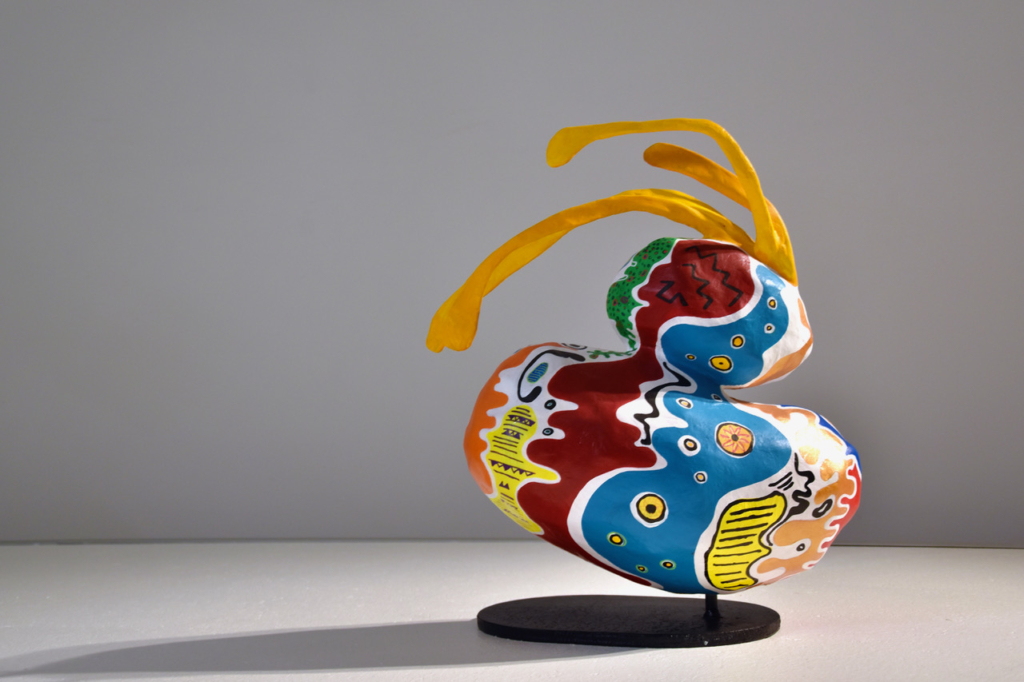
I suoi prossimi progetti?
Ne ho molti, sempre che sia possibile attuarli visti i tempi attuali: ho un progetto di arte di riciclo da formalizzare con il Qatar, che però deve essere ancora definito. Poi c’è la presentazione della mucca ai Mondiali di Calcio 2022, anche per questo sono in attesa di risposte più concrete. Sono un po’ scaramantica dunque preferisco non anticipare troppo, posso solo accennare che ho in programma un paio di mostre a Milano e vorrei entrare nei mercati di Spagna, Russa e Dubai. Spero che i miei desideri si realizzino.
TIZIANA MUCCHIANI-FARAH-CONTATTI
Email: tmucchiani@gmail.com
Sito web: www.tizianamucchiani.art
Facebook: https://www.facebook.com/tiziana.mucchianifarah
Instagram: https://www.instagram.com/mucchianifarah/
Marta Lock’s interviews:
Tiziana Mucchiani-Farah, the world as a source of inspiration for generating art
Dynamic, explosive, a true volcano of vital energy, as well as creative, Tiziana Mucchiani-Farah, aka MuiT, has chosen to live her life measuring herself against the discovery of the world, as well as herself; of Italian origin, she moved to Germany to study and then to London to follow a professional path that brought her into contact with multinational companies, thanks to which she not only perfected her foreign languages but also had the opportunity to develop an empathetic and listening attitude towards everything that was different and external to herself, thus growing as an individual and as a professionist. During her time in London she embarked on a path that was contemporary to her work, namely the artistic one, giving vent to a creative energy that she felt growing inside her to the point of having to manifest itself; her initial studies in Art and Ceramics allowed her to study the subject and then gradually move towards the sculpture that distinguishes her current creative language. After twelve years in the United Kingdom she decided to return to Italy and then, due to the usual vicissitudes of life, she settled permanently in Switzerland where she currently lives and works, devoting herself solely to her profession as an artist. Her openness to the other has allowed her to develop an open and vital character, aware that every event, every interaction and every encounter has a positive effect on the existential journey of an individual; and it is exactly this basic concept that can be seen in her sculptures in which the sphere is the protagonist, symbolising the circle of life, of the experiences that must lead to personal and interior fulfilment and it is thanks to their succession that evolution progresses, encounter after encounter, circumstance after circumstance. Her versatility and openness to experimentation are also reflected in the choice of materials through which she gives life to her creative impulse, because Mucchiani-Farah ranges from bronze to metal, from ceramics to papier-mâché, from plaster to fibreglass according to the emotions she wishes to describe, the message she wants to leave for the observer. Her knowledge of human versatility, of the facets of a truth that can never be absolute precisely because there are many points of view that are equally valid when observed from the angle of the individual, enables her to be open, almost questioning about the subjects she addresses in her sculptures; this characteristic is revealed in the fact that she never closes off the sphere, but leaves holes for interaction with the surrounding space, but also by inserting undefined figures that could be interpreted as hands reaching out for dialogue and confrontation, and which are a metaphor for the need to understand, to absorb the inner knowledge that is missing. The surfaces can be smoother or rougher, depending on the emotion told in the artwork. When, however, she proposes to create larger sculptures, intended and conceived to enter into direct communication with the external environment, the artist abandons the plastic monochrome of bronze to create brightly coloured artworks, in which the tones are full, not at all shaded but defined and incisive precisely because they are decisively present in the single chromatic identity. The message is therefore sunny, smiling, enthusiastic, communicating with the observer through the childlike and primordial joy that is hidden inside every person but that is often forgotten or hidden because being an adult also includes that sacrifice of the playful side… yet Tiziana Mucchiani-Farah suggests that this is not the case, that the two parts can coexist and induce one to live existence in a better way. Let us now get to know this original artist personally.
Tiziana, your personal journey has formed the basis and the very essence of your creativity; can you explain when you began to feel the urge to undertake artistic studies? Was there a specific episode or was it something that matured slowly within you?
I have always loved to draw, ever since I was a child, having a piece of dear, a sheet of paper or a diary and some colours made me happy and absorbed me for a long time; then I started to make small sculptures with Das until the desire to deepen and indulge my artistic vein by choosing specific studies manifested itself in me. However, various vicissitudes of life prevented me from realising my dream and it was only late in life, when I was already living in London, that I was able to study Fine Arts and Ceramic Art at night school, practising both but beginning to have a strong preference for working with the material. Later, after I moved to Mendrisio, Switzerland, I felt the need to continue my studies and enrolled in a Sculpture Course at the Foundry, where I literally fell in love with bronze. The ability to shape and give life to something through my hands gives me an incredible feeling of fulfilment, which is why my artistic production is mainly related to sculpture.
Your sculptural style leans towards Abstractionism, yet it doesn’t stray far from Surrealism, especially that of Joan Miro. Was this a deliberate choice or a natural inclination?
Abstractionism was a natural transition as I moved from painting to sculpture; the great masters of the past who fascinated me most were Picasso, Cézanne, Dali, Kandinsky, so the tendency towards the undefined form was a natural evolution. However, the real turning point in the choice of my style was when I discovered Barbara Hepworth’s sculptures, which really fascinated me; following this in-depth study, I realised that I needed Abstractionism because in my mental, as well as artistic, form there is a need to focus only on what I really need, eliminating the superfluous and cleaning the lines as much as possible. For example, in my Spheres the message that emerges is that even if you start from the whole, from a universe, you still come to tend only towards what you really need… after all, this is the path of natural evolution of each individual who, with growth and maturity, discovers that much of what was previously considered important, was actually only superfluous. In fact, this operation of eliminating the inessential manifests itself through an outward leaning, and what remains is only the sinuous line of the movement of life.
You recently participated, for the second year among others, in the Qatar International Art Festival, how important was this experience in your artistic career? What are your main achievements and gratifications during the 2021 edition?
Participating in these events is fundamental on a human and artistic level, as you come into contact with colleagues from all over the world, thus generating a very important exchange; I have always thought that art has no borders, so interaction becomes one of the most important moments of this type of event, a mutual enrichment, especially in virtue of the stylistic differences of each artist. Not only that, but opening up to this type of event also increases one’s artistic curriculum, widens contacts, demonstrates open-mindedness and a desire to go beyond the borders of one’s own country, and increases the interest of galleries and collectors. The fact of being seen by an international audience allows one’s art to be better conveyed, to be seen and this is an incentive for enthusiasts to buy artworks. The 2021 edition of the Qatar International Art Festival was even more important because it was attended by the Ambassadors of Italy and Switzerland, and so I was able to receive a proposal from the former to leave some works on display at the Italian Embassy and from the latter to paint a cow, the symbol of the Swiss nation, which will then be exhibited at the 2022 World Cup; for me this was an incredible satisfaction that accompanied the pleasure of meeting artists I already knew and other new ones who opened the way to other contacts.
Do you think interaction and open confrontation are important in today’s art, where artists seem to be experiencing a phase of individualism? What do you see as the weaknesses of a path opposite to that of the 20th century and what are the strengths?
Comparison in contemporary art is absolutely essential however, I realise that most of today’s artists are individualistic, closed to interaction, almost as if there were an ill-concealed competition that prevents them from being completely open to contamination, an indispensable factor of open-mindedness, because it is often precisely through confrontation and the ability to collaborate that the best innovations can be generated, new techniques perfected and learned, and critical opinions heard that can bring mutual improvements. In London, I learned the pleasure of working as part of a team, but since returning to Switzerland, this kind of openness is more difficult to find, and I am very sorry about this because it makes me feel limited in my artistic development. In the 20th century it was different, the artistic world of that period was a blank slate, everything was still to be written and the members of the various movements had the enthusiasm to come together to create and update guidelines precisely through confrontation, there was collaboration and camaraderie, and their meeting included many other sectors of culture making that era decidedly more alive. Today’s artists, faced with all that has been said by the great masters of the 20th century, can only try to personalise and rework something that has been invented, apart from Digital Art, here everything is still to be defined, to be discovered.
What are your next projects?
I have many, if it is possible to implement them given the current times: I have a recycling art project to formalise with Qatar, but it has yet to be defined. Then there is the presentation of the cow at the 2022 World Cup, for which I am also waiting for more concrete answers. I’m a bit of a superstitious person, so I prefer not to anticipate too much. All I can say is that I’m planning a couple of exhibitions in Milan and I’d like to enter the Spanish, Russian and Dubai markets. I hope that my wishes come true.
